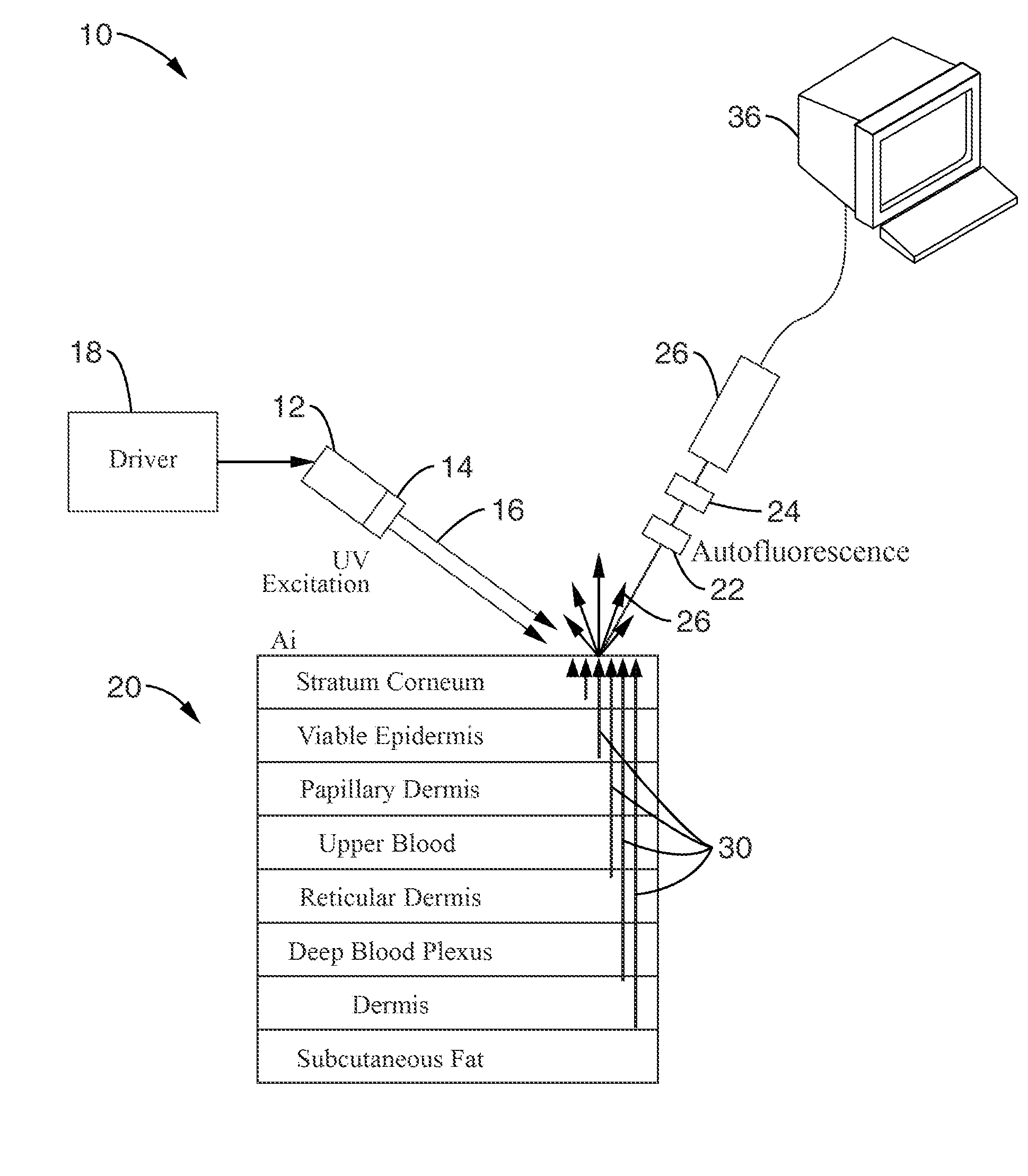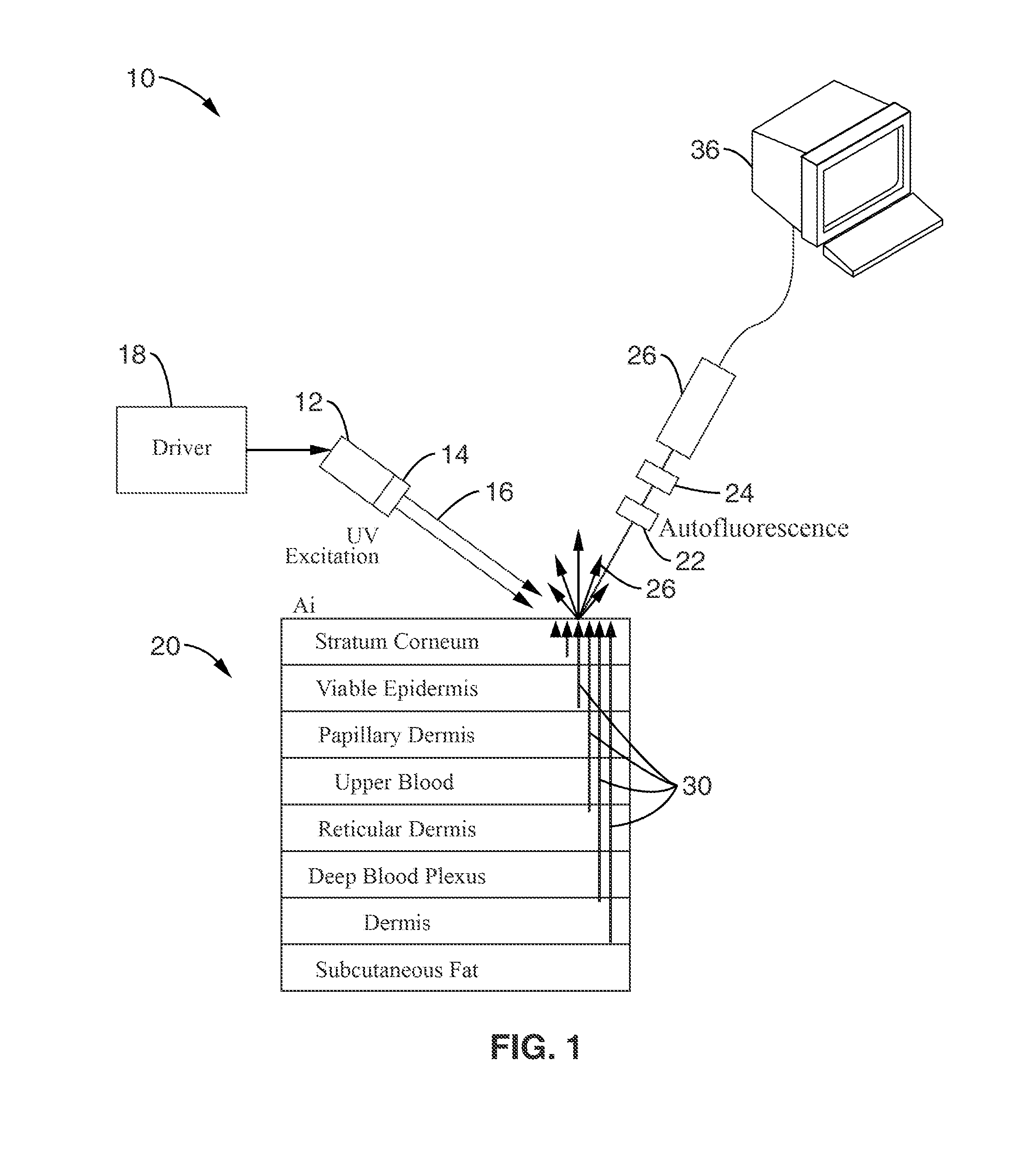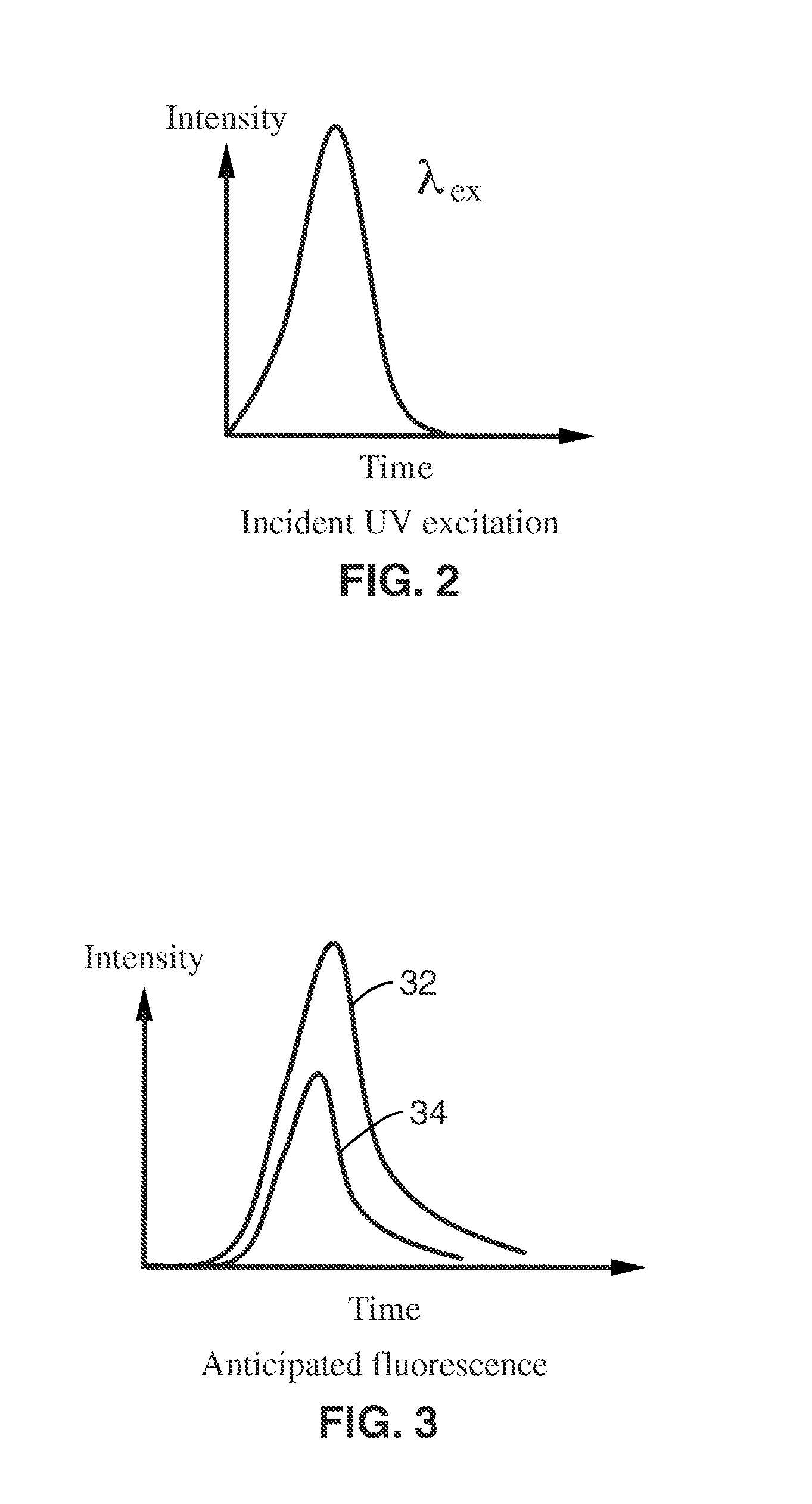Time-resolved non-invasive optometric device for medical diagnostic
a non-invasive, optometric technology, applied in the field of non-invasively probing the inner structure of the skin of a patient, can solve the problems of limiting the effectiveness of the above-mentioned device, inconvenient use, and inability to accurately detect the inner structure of the skin of the patient,
- Summary
- Abstract
- Description
- Claims
- Application Information
AI Technical Summary
Benefits of technology
Problems solved by technology
Method used
Image
Examples
Embodiment Construction
[0061] Referring more specifically to the drawings, for illustrative purposes the present invention is embodied in the apparatus generally shown in FIG. 1 through FIG. 15. It will be appreciated that the apparatus may vary as to configuration and as to details of the parts, and that the method may vary as to the specific steps and sequence, without departing from the basic concepts as disclosed herein.
[0062] Many health conditions affect the morphology, physiology, and fluorescence characteristics of the human skin. Therefore, light transport, and in particular transient light transport and time-resolved fluorescence within the skin, differ from healthy subjects to patients with targeted disorders.
[0063] For example, presence of diabetes mellitus is generally associated with measurably thickened skin and yellow hue among diabetic patients compared with their non-diabetic counterparts. In addition to pre-diagnostic of diabetes, time-resolved fluorescence spectroscopy of skin couple...
PUM
 Login to View More
Login to View More Abstract
Description
Claims
Application Information
 Login to View More
Login to View More - R&D
- Intellectual Property
- Life Sciences
- Materials
- Tech Scout
- Unparalleled Data Quality
- Higher Quality Content
- 60% Fewer Hallucinations
Browse by: Latest US Patents, China's latest patents, Technical Efficacy Thesaurus, Application Domain, Technology Topic, Popular Technical Reports.
© 2025 PatSnap. All rights reserved.Legal|Privacy policy|Modern Slavery Act Transparency Statement|Sitemap|About US| Contact US: help@patsnap.com



